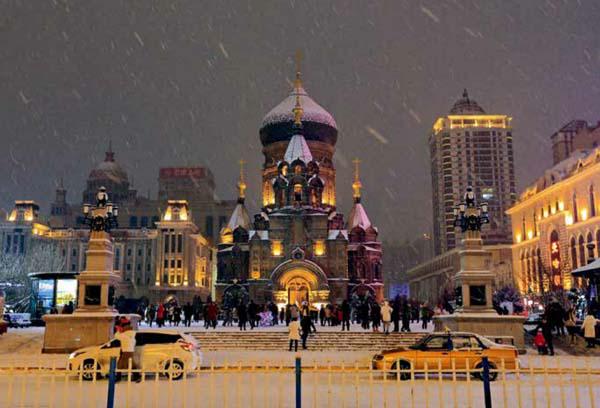Give and Take Architecture and Cultural Footprints
2018-01-15byNathanBennett
by Nathan Bennett


Last summer I visited Harbin in northeastern Chinas Heilongjiang Province. Harbin is something like an inland Shanghai. It is a nexus between Europe and China, and that connection gives it a modern shape. Accordingly, there is a preponderance of European architecture left over from long-term Russian presence in the city. Architecture can be a strong cultural footprint that nations leave as they interact with each other, but it is up to each country to decide what to preserve, what to eliminate and what to imitate.
Historically, Harbin, like Shanghai, supported a dynamic foreign community. Russians arrived during the Tsarist era and remained after the dissolution of the Russian Empire. Then, the community endured Japanese occupation for many years. However, most of them moved out after 1949 when decades of foreign control ended. Descendants of Russians who married Chinese remain, forming a contemporary expatriate community, but not one that will leave an architectural footprint like in years past.
Some parts of Harbin feel like a remote Beijing neighborhood. The Chinese spoken in the region is the most standard Mandarin, and one can find barbecued mutton and light beer just about everywhere. I dont know what the local cuisine is supposed to be, but the mutton and beer felt straight out of Beijing. An expat friend lamented that some restaurants were closing and being replaced with already ubiquitous chuar (barbecue sticks). My thought: Harbin people like what they like.
As I was traveling in Harbin, I certainly made use of Didi, a ride-sharing app. In Beijing where I live and work, many drivers hail from Harbin. Such is to be expected in the capital—people come from everywhere to find work opportunities. But it was interesting to meet Harbin drivers in Harbin where they were totally at home. One driver I met could speak a little English, which got me to think about other kinds of footprints that nations leave as they interact with each other: language and culture.
My 30-something Didi driver claimed that he had taken English classes in school all the way through college. Most of my time in China has been spent teaching English. He was too old to have been my student, but at least a decade past his student days, he was still able to converse with me in English. I started thinking about what happened to many of my students: Some left to study abroad, and others were happy just to pass my class and graduate. Wherever they go in the future, they take a bit of the English language and American culture. Some such footprints are unavoidable because English is the preferred international trade language, so modern education will always include it for at least some students.


The same is true for architecture: You cant construct a modern skyscraper with traditional building methods. Cities all over the world share similar blocks of concrete, steel and glass because the science is the same. If you want a really tall building, you have to build according to engineering rather than cultural nostalgia. China is making both modern architecture and the English language its own. On the flip side, greater numbers of American business students are studying Chinese because many of their future business partners will be Chinese.
As our nations more intimately engage with each other, we will leave footprints, be them cultural, historical, technological or architectural. Footprints may be as large as cities. Some cities come into being because of interactions between nations–Harbin and Shanghai are examples that immediately come to mind. Yet, the two cities remain truly and overwhelmingly Chinese regardless of the strength of outside influence. Footprints may also be as small as individuals. I am here teaching English while many Chinese students are studying in America. Whatever I leave behind and whatever exchange students bring back from abroad, China will process those contributions, deciding what to keep and what to let go.
One thing I most admire about China is its cultural stability. Whatever changes occur in the outside world, Chinese culture maintains a steady course. Although modern economics, geopolitics, technology, medicine, education and other realms differ from traditional Chinese models, China has taken things from the outside and made them truly its own. Whether the architecture is Romanesque, Art Deco or even a simple tower block, the architects and builders are Chinese.